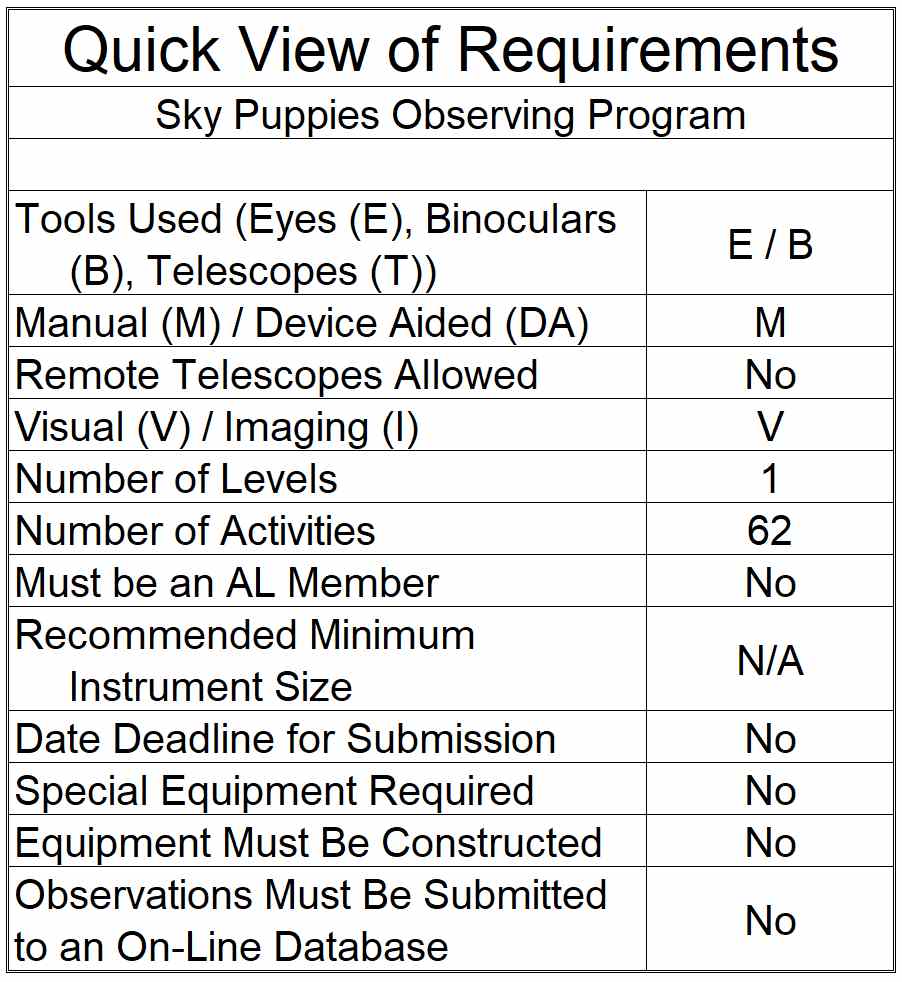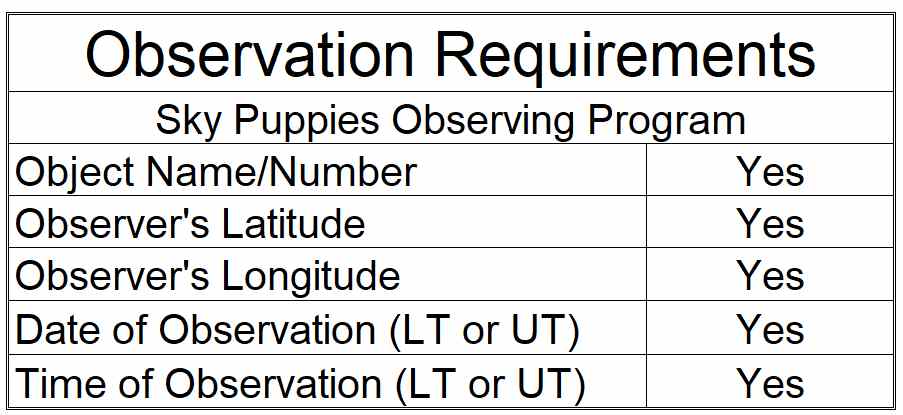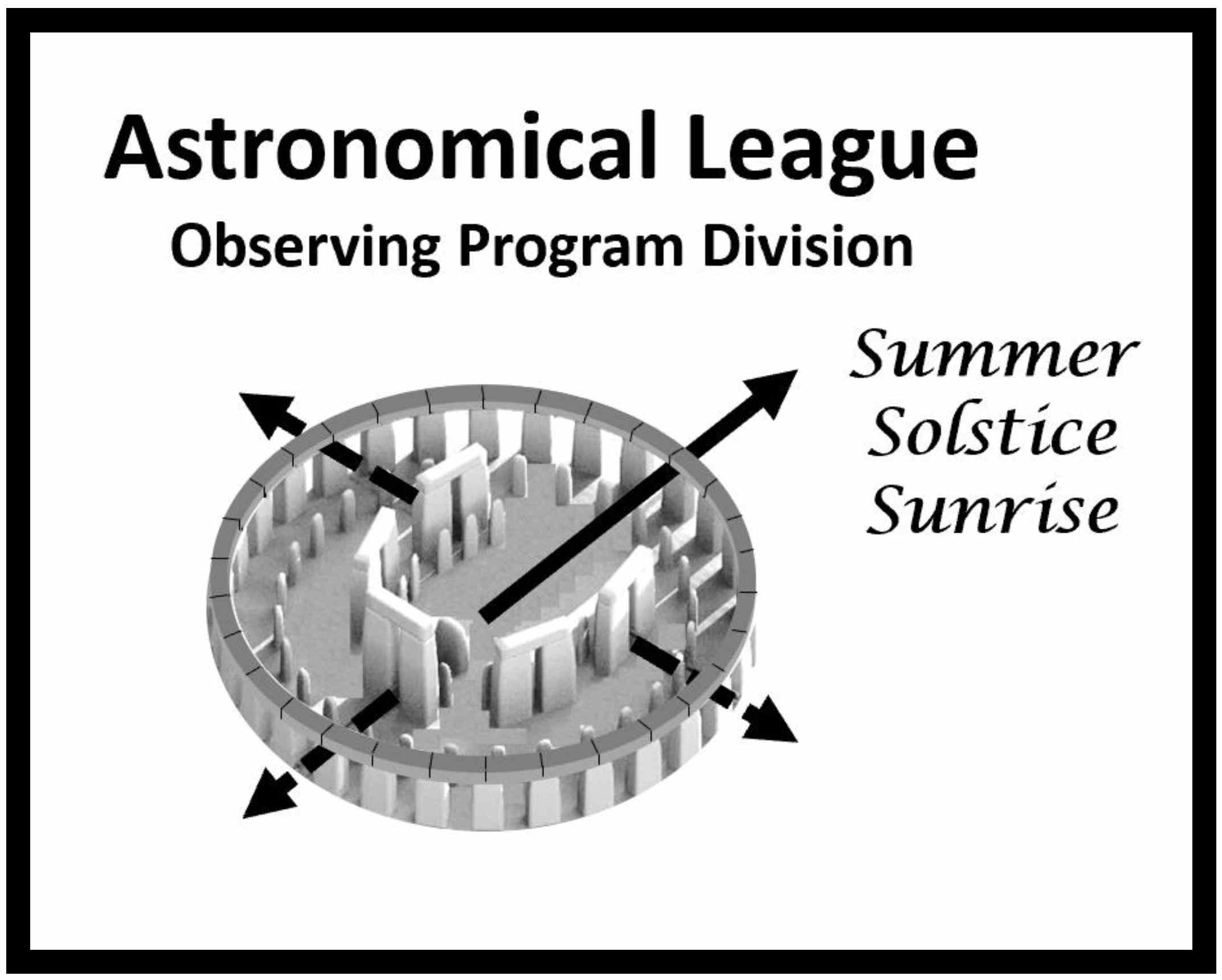Sky Puppy Observing Program Coordinator:Aaron Clevenson |
|
IntroductionWhile the vast majority of the Observing Programs are geared to beginning and advanced adult observers, the Sky Puppies Observing Program is designed just for the younger observer. The Astronomical League encourages young observers to hone their skills early since most hobbies and vocational interests begin at an early age. The purpose of the Sky Puppies Observing Program is to familiarize young observers with the night sky and whet their appetite to eventually graduate from a Sky Puppy to an experienced observer and additional Astronomical League Observing Programs. This process is usually begun when a parent takes their child along on observing trips. Unfortunately, many of the Observing Programs are too abstract, even esoteric, to hold the attention of the younger observer. In addition, many observing parents can’t justify the expense of a second telescope necessary for the child to use when both parent and child are observing together. The Sky Puppies Observing Program was created to fill just that gap. To fulfill the goals of this Observing Program and receive the Sky Puppies pin and certificate, the young observer must use only their eyes, a pair of inexpensive binoculars, pencil & paper, and charts or a planisphere. A Sky Puppy will learn the rudiments of observing, how to read a chart or planisphere, and how to find and identify constellations, stars, and deep-sky objects. |
 |
In addition, a Sky Puppy will learn that the night sky is not just about dots and fuzzy blobs, but about history, culture, and stories. Their goal will be to draw, identify, and describe 15 IAU (International Astronomical Union) constellations. Know the difference between an asterism and a constellation and be able to tell at least two traditional stories implied by the constellations (stories may originate from any documented cultural tradition). They should be able to use a pair of binoculars to locate 5 deep-space objects and identify what they are.
Requirements and Rules
This certification is available to all who are interested. While most of our observing programs are reserved only for members of the Astronomical League, Sky Puppies is designed to create an interest in astronomy among the young. Scout groups, youth groups, school groups and other organizations may find this program appealing. We do, however, welcome and encourage membership in our Astronomical League, either through their local astronomical society or as members at large. If you are not a member and would like to become one, check with your local astronomical society, search for a local society on the Astronomical League Website (click here), or join as a member at large (click here).
To qualify for the Sky Puppies Observing Program, the observer must be 10 years of age or younger. Thanks to our partnership with NASA’s Space Science Education Consortium this Observing Program no longer requires the youth to be affiliated with the Astronomical League. They must complete all of the Sky Puppy Projects with each project’s completion substantiated through log notes, drawings, or other appropriate documentation. To receive the Sky Puppy pin and certificate, copies of all documentation must be signed by a mentor and submitted with a letter stating the date of birth of the candidate to the Sky Puppies Observing Program Coordinator, or reviewed and approved by an astronomy club officer who must then forward a letter stating that the observations have been properly completed and that the candidate meets the age requirement. The young observer must complete all projects prior to his or her 11th birthday and must submit their certification request no later than their 12th birthday. The young observer should also state in their submission whether the pin and certificate should be sent directly to him or her, or to a mentor for formal presentation (please provide an address).
| Observations should include the date and time (local or UT) and an estimate of the Seeing and Transparency. |  |
General Information
Sky Puppy Manual or Workbook: Each Sky Puppy candidate is encouraged to acquire the Sky Puppy Manual or Workbook at no cost. They include a variety of projects tailored specifically for the Sky Puppy. The workbook style enhances learning through hands-on projects, matching word exercises, coloring, and word games, and includes a make-your-own planisphere project. The Sky Puppy Manual or Workbook can be acquired from the Coordinator of the Sky Puppy Observing Program.
Sky Puppy Projects:
- Must draw by freehand 15 constellation patterns (with or without stick figures and not necessarily from memory)
- Without aids or assistance, must be able to positively identify in the night sky the same 15 constellations
- Must be able to identify and briefly describe any major stars or naked-eye objects in each constellation (i.e. “Betelgeuse is a red super-giant star”, or, “that fuzzy patch is the Andromeda galaxy”)
- Must be able to tell 2 different traditional constellation stories from a cultural tradition of the child’s choice.
- Must be able to use binoculars to locate and identify 5 deep-space objects from this list suited to binocular observing.
- M42, the Orion Nebula
- M31, the Andromeda galaxy
- Albireo, a double star in Cygnus
- The large and/or small Magellanic Clouds
- The Pleiades
- The Hyades
- a Globular cluster
- The Beehive
- Must be able to identify and describe the Milky Way
- Must be able to find either the North Star or the Southern Cross. Those observers who are north of the equator will want to find the North Star, while those to the south will want to find the Southern Cross.
- Must keep a log of all observations. Each entry must provide the object name, date, naked eye or binocular, and observation notes.
- Must draw a rough sketch of one of the following:
- Jupiter with as many of the 4 Galilean moons as you can see
- A crater on the moon
Useful Observing Tools for an Aspiring Sky Puppy:
Necessary, but not required (borrow a friend’s):
- Planisphere (DIY kit in the Sky Puppy Manual)
- Red flashlight
- Binoculars (preferably 10×50, although smaller will work)
Nice, but not necessary:
- Log sheets as found in the Sky Puppy Manual or Workbook
- Star charts or observing software
- Observing chair (foldable lounge chair)
Notes:
Reference List:
- The New Patterns in the Sky (Myths and Legends in the Stars): by Julius D. W. Staal
- The Night Sky Planisphere: by David Chandler
- Sky Atlas for Small Telescopes and Binoculars: By David Chandler
- NightWatch: A Practical Guide to Viewing the Universe, 3rd: by Dickinson
- The Stars: A New Way to See Them: by Hans Augusto Rey
- Find the Constellations: by Hans Augusto Rey
- Turn Left at Orion: by Guy Consolmagno
- Constellation Stories as told by Kevin Cornwell (c) 2003 (in MP3 format):
Submitting for CertificationCompleted projects should be submitted to the Sky Puppy Observing Program Coordinator. Please include the name of the recipient, the mailing address, email, phone number, society affiliation, and to whom the certification should be sent. Sky Puppy Observing Program Coordinator:Aaron Clevenson |
 |
Links:
- Astronomical League (www.astroleague.org)
- Sky & Telescope Magazine (www.skyandtelescope.org)
- Astronomy Magazine (www.astronomy.com)
- Orion Telescopes (www.telescope.com)
- Space.com (www.space.com)
- The Nine Planets (http://nineplanets.org)
- Heavens Above (www.heavens-above.com)
- Sky Maps (www.skymaps.com)
- Constellation Stories as told by Kevin Cornwell (c) 2003 (in MP3 format):
Sky Puppy Manual and Workbook
Each Sky Puppy candidate is encouraged to acquire the Sky Puppy Manual or Workbook at no cost. These include a variety of projects tailored specifically for the Sky Puppy. The workbook style enhances learning through hands-on projects, matching word exercises, coloring, and word games, and includes a make-your-own planisphere project. The Sky Puppy Manual can be acquired from the Sky Puppies Observing Program Coordinator. The Sky Puppy Observing Program is available to anyone, at no cost.




